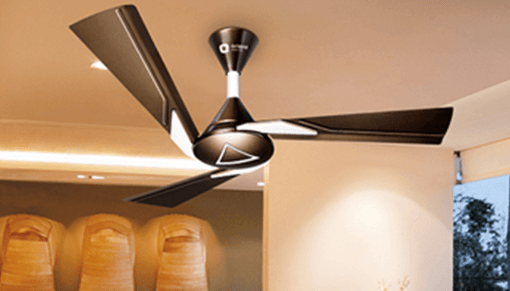Top Factors to Consider When Selecting a DC Ceiling Fan

Is there anything more blissful than a cool breeze on a scorching summer day? Not only does it provide instant relief, but it also helps save money by reducing the need for air conditioning. If you’re searching for the ultimate cooling solution, look no further than DC ceiling fans! These innovative gadgets have become increasingly popular due to their energy-efficient features and stylish designs. But before you embark on your quest for the perfect fan, let’s explore the top factors to consider when selecting a DC ceiling fan – because staying cool should never come at the expense of breaking the bank!
What to Look for in a DC Ceiling Fan
When selecting a DC ceiling fan, it is important to consider a variety of factors, including:
-The intended use of the fan
-The size and type of room
-The cost
– The features offered
There are three common types of DC ceiling fans – manual, remote control, and programmable. Manual fans can be operated by hand or with an electric switch. Remote control fans require no contact between the fan and the user; a handheld remote controls them. Programmable fans allow users to set up schedules for on/off times, speeds, and even DJ lighting effects. Some models also have built-in weather sensors that alert owners when inclement weather is approaching.
How Does a DC Ceiling Fan Work?
When selecting a DC ceiling fan, there are a few things to remember. First, ensure you get the right model for your particular space. Second, choose the right size for your room. And finally, be sure to select the right type of motor – either an electronically controlled motor or a forced-air motor – based on your needs and preferences.
To determine what type of fan is best for your space, consider these five factors: blade size, quantity of blades, CFM ratings, price point, and install location.
Blade size is one of the most important factors when selecting a DC ceiling fan. A larger blade will move more air than a smaller blade but also create more noise. If noise is a problem in your space, go with a smaller blade; if not, go with a larger blade.
The quantity of blades also matters. The number of blades affects how much air the fan can move and how much cooling power it has. 3-blade fans move more air than 4- or 5-blade fans; however, a 4- or 5-blade fan will move more air than a 2- or 3-blade fan and consume less electricity.
CFM ratings are important if you have large rooms and/or want consistent airflow. A higher CFM rating means more air can flow through the fan in one minute (measured in cubic feet per minute [CFM]).
The price point is another important factor when selecting a DC ceiling fan. More expensive fans are of higher quality and will last longer than less expensive fans.
Install location is also important. Ensure the fan is compatible with your ceiling, screws, and wiring.
Factors to Consider When Choosing a DC Ceiling Fan
When choosing the perfect DC ceiling fan, there are a few factors to consider. Here are four major factors to keep in mind:
1. Design – Choosing a fan based on its design is essential, as different fans have different features that can affect your cooling efficiency. For example, a cone-shaped fan will cool down surrounding areas more than a straight or circular one.
2. Size – Consider the size of your room and the type of ceiling fan you want before purchasing. Many fans come in multiple sizes and can be mounted in high or low locations.
3. Speed – Higher speed fans provide greater airflow and are typically louder than slower models, but they may also move more dust and debris around your home. Choose wisely before settling on an option!
4. Warranty – Always read the warranty information before buying a new product to ensure you’re covered if something goes wrong. Some brands offer limited warranties, while others offer lifetime warranties on their products.
Cost of a DC Ceiling Fan
When buying a DC ceiling fan, there are many factors to consider. Here are the top costs to mind:
1. The Price of the Fan
Fans can vary in price a lot, but on average, they range from around $100-$200. Make sure you factor this cost into your decision-making. Some fans have additional features like light bulbs or remote controls, increasing the overall cost.
2. The Size of the Fan
The size of your fan will play a role in how much it will cost and how large it will be. Generally, smaller fans are cheaper and smaller fans can easily fit onto a ceiling. Larger fans can be more expensive, but they’ll usually cover larger areas and are easier to move around if needed.
3. The Features of the Fan
Some features that should be considered when shopping for a DC ceiling fan include oscillating or movable blades; multiple speeds; timer options; and light fixtures. All of these features add to the price of the fan and should be weighed against each other when making a purchase decision.
Conclusion
A ceiling fan can be one of the most impactful additions to your home due to its ability to circulate air and reduce ambient temperatures. When selecting a DC ceiling fan, it is important to consider several factors, including blade size, speed, and noise levels. By staying informed about these factors and making intelligent choices when purchasing your fan, you can ensure you get the best possible value for your money.





